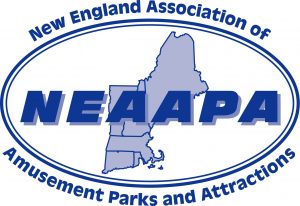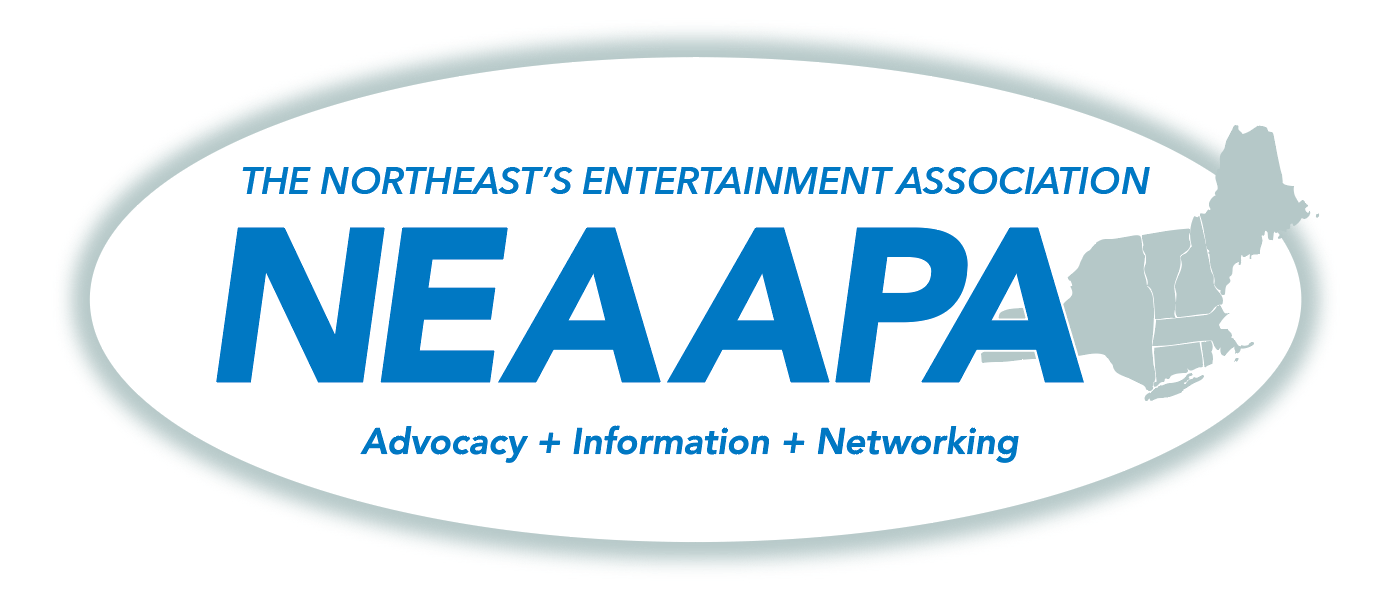History of NEAAPA
By Ron Gustafson | Editor, New England News
Editor’s note: In 2010, Publisher Gary Slade of Amusement Today asked us to prepare an article related to the history of the New England Association of Amusement Parks and Attractions (NEAAPA). Late NEAAPA Secretary/Treasurer Alan Ramsay dug through the association’s archives for information to forward to me while I conducted numerous telephone interviews that summer to have the article ready for the December edition of Amusement Today. With NEAAPA celebrating its 100th anniversary this year, we found it fitting to republish the article in this edition of New England News, providing the membership with a commemorative hard copy of how the organization was formed. The article appears exactly as written in 2010 and has been reprinted with permission.
Nearly a century ago, amusement property concessionaires in Massachusetts were embroiled in controversy over licenses, especially those allowing them to conduct business on Sunday.
That probably came as no surprise as during the early part of the 20th century many states had blue laws in effect to preserve Sunday as a day of worship and rest, so the notion of working – even at a resort concession stand – was simply out of the question.
The concessionaires from Riverside Park, Agawam; White City, Worcester; and Revere and Nantasket Beaches organized in 1913 to confront the licensing issues in what was considered the birth of the one of the first regional organizations in the nation to represent the amusement industry.
The Massachusetts Amusementmen’s Association, which it was called at the time, was led by elected officers Andrew Casassa, Charlie Chisholm, and Will White. White was actively involved in the industry as he worked at Norumbega Park near Boston. Casassa was an operator at Revere Beach and also mayor or Revere, Mass., while Chisholm worked for Suburban Gas and Electric Co., also of Revere.
The group, according to records, had to expand its membership to include much of New England in order to gain support for its agenda and by 1926 it had formally incorporated.
The first “general get-together” was held in July of 1927 at Crescent Park, Riverside, R.I., with more than 200 persons in attendance.
By then the Massachusetts group had officially evolved into the New England Amusemen’s Association, with Casassa as its president (1927-29). The organization had two name changes in a handful of years to follow: New England Section National Association of Amusement Parks and New England Association of Amusement Parks.
In the early 1940s the group again changed its title to become the New England Association of Pools and Beaches (NEAAPB), according to records.
Not only did NEAAPB represent a large concentration of family-owned parks and municipal beaches, but it also broadened its horizon by luring in prominent and industry pioneers into the fold. Those who became actively involved in the early days included George P. Smith Jr., of the Philadelphia Toboggan, Co., Philadelphia, Pa., and James A. Donovan and Fred Markey, of the Dodgem Corp., Lawrence, Mass. Markey would go on to serve as secretary for the association, a post he held down for more than three decades.
The focus of the group was to achieve better operating conditions for the industry in New England, including an uphill battle to lengthen the summer vacation for public schools – a venture that reportedly failed.
Of particular interest at the winter meeting of 1930 was a paper titled “Parks of the Future,” which was read by Frank Darling, director of Playland, Rye, N.Y. The paper “became a very effective influence on the industry,” NEAAPB records stated.
By 1932 the association had established a set agenda to hold a two-day winter meeting as well as a one-day summer gathering. That pattern continues today within the organization.
Into The Limelight
It was during the same time frame that many prominent family-owned parks of the era emerged, along with some legends of the industry.
Edward Carroll Sr. became involved in the entertainment industry in the 1930s when he operated a motion picture theater in Boston.
In the mid 1930s he became interested in the then defunct Riverside Park in Agawam, Mass., and by 1940 had purchased the property to reopen it. Riverside soon flourished again and became – with the help of his son, Edward Jr. - one of the top amusement parks in the East.
Both of the Carrolls served as president of the New England association and Edward Sr. was also president (1951 and 52) of the National Association of Amusement Parks, Pool and Beaches (NAAPPB) – today known as the International Association of Amusement Parks and Attractions (IAAPA). Edward Jr., today serves on IAAPA’s Board of Directors and is also a past president of IAAPA.
In 1938 Massachusetts attorney Henry Bowen headed up a group of businessmen who purchased Whalom Park in Luenburg, Mass., a property deeply rooted with history as it dated back to 1893.
Bowen had long loved the park he partnered to purchase as he had worked in the custard stand there. He, too, served as president of the New England group (1945-46) and NAAPPB (1955-56). Bowen was also an icon at the national association’s infamous “Chicago Convention,” where the meeting rooms were filled with cigar smoke and the clanging of whiskey snifters – simply the way business was conducted in that era.
“I went to all of the summer meetings with my father and remember them well,” said Bowen’s son, John, who went on to operate Whalom Park until it closed in 2000. “I didn’t start to get involved with the association personally until I got out of law school in 1973. Shortly after that I was on the board of directors.”
Known As The Historian
John Bowen was also instrumental in keeping the archives for the association, which formally became the New England Association of Amusement Parks and Attractions (NEAAPA) in 1983. By then NEAAPA had become the largest regional association in the nation dealing with amusement parks – a distinction it maintains to this day.
“I was known as the historian,” he said, and naturally so. “Because we had the park and I had grown up in the business, we wanted to preserve as much as we could. Even in my lifetime, you want to save all of that.”
The Bowens remained heavily involved in the association throughout the years as John’s wife, Beth, and brother, Bob, both served as NEAAPA secretary.
“When I was attending the monthly meetings years ago it was basically all amusement parks,” he added. “We sat around the table talking about common problems and solutions. We all knew each other and each other’s operations. It was relaxed and informational.”
The philosophy then, according to John Bowen, was that the New England parks were not competing against each other.
“There was business out there for all of us,” he recalled. “There was great cooperation among the parks. If Canobie Lake needed a cable for the Ferris wheel, they came down and got our spare and replaced it when they could.”
Still practicing law in Massachusetts, Bowen says NEAAPA has certainly become larger and more diverse in recent years. At the same time he said it has become less personal than in the past.
But bigger, he says, makes it “easier to rally the troops” when there are industry issues at hand.
“The benefit of any association is that it establishes contacts within that industry,” he added.
As for the demise of Whalom Park a decade ago, Bowen admits he misses the business.
“Being a lawyer is OK, but not everyone has a roller coaster or water slide,” he asserted.
Others With Impact
The roster of NEAAPA board members and officers throughout the years reads remarkably like a “Who’s Who Of The Amusement Industry,” due to the fact that many of the nation’s oldest parks were located in New England
Some of the other past presidents include: Julian H. and Richard L. Norton, Lake Compounce, Bristol, Conn. (the nation’s oldest continually operating amusement park); Roger J. Shaheen, Salisbury Beach, Mass.; George Frantzis, John Frantzis, George Frantzis II, Quassy Amusement Park, Middlebury, Conn.; Anthony Pero, Ocean Beach Park, New London, Conn.; Myron Klayman and Lawrence Stone, Paragon Park, Hull, Mass.; and Carl Berni and Tom Morrow, Canobie Lake Park, Salem, N.H.
Shaheen and Stone also served as president of the national association.
“The longevity of the New England association is incredible,” said Kate Horner Wall, a past president and secretary who got her start in the industry in the 1970s at Riverside Park in Massachusetts. She was also among the “first wave” of women to sit on IAAPA’s Board of Directors.
“We seem to do our best as an association when there is a problem that people can get their arms around,” she said of NEAAPA. “It’s nice to know that there is a group of like-minded people who you can trust to run to and get input, and likewise they feel they can call you, too.”
A testament to that “trust” is a story Wall shared during a recent interview.
“John Frantzis (Quassy Amusement Park) was the first one to tell me years ago that people would buy bottled water if we sold it at Riverside,” she said. “I told him he was kidding me.”
Of course the bottled water phenomenon swept the industry like wildfire and continues to thrive today at virtually any business that sells bottled products.
Wall says NEAAPA has also come a long way with its educational programs, which are “a strong component of our work and a lot of effort.”
Ed Connor, also a past president who lays claim to being the oldest active NEAAPA member, says the enthusiasm still exists among the members.
“When we started it was all parks,” said Connor, who has been souvenir manager for 22 years at the Eastern States Exposition (The Big E), West Springfield, Mass. He, too, got his start at Riverside Park in the early 1960s, working for the Carroll family.
“Today we have FECs (family entertainment centers) and other attractions that we didn’t have then,” he noted.
“Mr. NEAAPA”
NEAAPA’s 2006 Annual Meeting was a special occasion for Connor, John Frantzis and the late Tom Morrow as they were all inducted into the association’s hall of fame. Morrow was operations manager at New Hampshire’s Canobie Lake Park for more than 30 years as well as a past president of the association.
He was credited as being the solid foundation at board meetings and held most positions within the organization throughout the years, thus earning him the title of “Mr. NEAAPA.”
Morrow, who died in 2007, is honored each November as NEAAPA stages the Tom Morrow Social during the annual IAAPA Attractions Expo.
Today And Beyond
The New England Association of Amusement Parks and Attractions today has more than 120 members including parks, FECs, attractions, zoos, traveling units, fairs, festival, manufacturers and suppliers.
“Communication with the membership is better than ever,” said current Secretary Alan Ramsay, who is also a past president. “The association is also offering more peer-to-peer contact and networking opportunities than in the past. Education is extremely strong.”
Ramsay also credits the long-term secretaries who have served NEAAPA over the years for helping to maintain the archives.
“We have complete record books – our archives are complete and diverse,” he added.
Donations to the archives continually come in, which are critical to preserving the industry history in New England.
“NEAAPA is a very unique organization that is deep in tradition, yet contemporary in its actions,” noted current President Greg Chiecko, an executive at the Eastern States Exposition. “Traditional parks remain the anchor of the organization. The diversification of the membership base to FECs, fairs and other organizations will allow NEAAPA to sustain in the future. This blending of the old and new position NEAAPA as an outstanding organization.”
“NEAAPA has lasted all these years because it has done a good job of reinventing itself when it needed to,” Wall added.
With nearly a century under its belt and still going strong, there are few who would argue.
Below are the logos that NEAAPA has used over the years.



